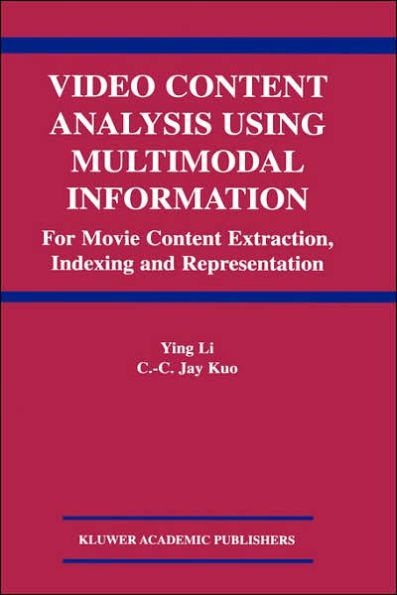5
1
9781402074905



Video Content Analysis Using Multimodal Information: For Movie Content Extraction, Indexing and Representation / Edition 1 available in Hardcover, Paperback, eBook

Video Content Analysis Using Multimodal Information: For Movie Content Extraction, Indexing and Representation / Edition 1
- ISBN-10:
- 1402074905
- ISBN-13:
- 9781402074905
- Pub. Date:
- 06/30/2003
- Publisher:
- Springer US
- ISBN-10:
- 1402074905
- ISBN-13:
- 9781402074905
- Pub. Date:
- 06/30/2003
- Publisher:
- Springer US

Video Content Analysis Using Multimodal Information: For Movie Content Extraction, Indexing and Representation / Edition 1
$109.99
109.99
In Stock

Product Details
| ISBN-13: | 9781402074905 |
|---|---|
| Publisher: | Springer US |
| Publication date: | 06/30/2003 |
| Edition description: | 2003 |
| Pages: | 194 |
| Product dimensions: | 6.10(w) x 9.25(h) x 0.02(d) |
From the B&N Reads Blog
